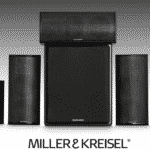
Sahir Choudhary, the COO and Sr. Architect, Habitat Architects writes on the transformative impact of Building Automation Technologies on modern architecture. He discusses how these innovations enhance efficiency and creativity, paving the way for smarter, more responsive designs that meet contemporary needs.
Technological advancements have reshaped the landscape of architectural design. The integration of advanced design tools has unlocked new dimensions of possibility, allowing designers to push the boundaries of innovation with newfound creativity and precision. These advancements have streamlined workflows and enhanced the overall quality and refinement of architectural outcomes, enabling a level of detail that elevates the design process. Beyond design and visualisation, technology has also revolutionised how buildings are brought to life and spaces are crafted. The emergence of building automation systems has allowed for the creation of intelligent environments that intuitively respond to the needs of their occupants, optimise energy efficiency and elevate the experience of the built environment. These forward-thinking design trends have seamlessly woven together technical and experiential aspects of architecture, fostering a future where our spaces are more integrated, sustainable, and attuned to the rhythms of contemporary life.
Shaping Architectural Design Processes and Outcomes
Computational technologies have enhanced architectural processes by introducing advanced tools that significantly improve the exploration and execution phases of design. These technologies allow architects to simulate complex scenarios, analyse data, and optimise designs in ways that were previously unimaginable. For instance, parametric design tools enable architects to manipulate design variables in real-time, exploring various possibilities and finding the most efficient and innovative solutions. This capability has expanded creative horizons and allowed architects to address complex challenges of structural integrity, environmental impact, and material efficiency with greater precision.
Furthermore, computational technologies have improved the execution of architectural designs by bridging the gap between conceptual ideas and buildable structures. Architects can use algorithms and digital modelling to create highly detailed and accurate representations of their designs, ensuring that complex geometries are constructible. This precision reduces the risk of errors during the construction phase, saving time and resources while enhancing the overall quality of the final product. Additionally, these technologies facilitate better stakeholder collaboration, as digital models can be easily shared, reviewed, and modified, ensuring that all parties are aligned and the design is innovative and executable.
Emerging Building Automation Technologies Impacting Architectural Futures
Innovative Robotics and 3D Fabrication Technologies have fundamentally altered the landscape and pushed limitations of architectural design and construction. These technologies have redefined design complexity and precision possibilities by automating complex building processes. These technologies are central to enhancing sustainability efforts, as they allow for the efficient use of materials and reduce waste during construction. This shift has streamlined construction processes, enabling faster completion times without compromising quality.
Artificial Intelligence (AI) and Machine Learning (ML) are rapidly transforming architectural practice, automating routine tasks that generally consume significant time and resources. These technologies are revolutionising an architect’s approach to design optimisation. AI and ML can analyse vast amounts of data to identify patterns and trends, allowing for the creation of innovative and highly efficient designs using limited resources. Moreover, these technologies offer predictive capabilities, enabling architects to anticipate future needs and challenges, thus crafting adaptable and future-proof buildings.
Building Information Modeling (BIM) is a game-changer in collaboration and project management. By providing a centralised digital platform, BIM facilitates seamless communication and cooperation between all stakeholders involved in a project, from architects and engineers to contractors and clients. This integration streamlines the design process, minimising errors and discrepancies that could arise during construction. It also enhances decision-making by offering detailed visualisations and simulations, allowing stakeholders to foresee and address potential issues proactively. The result is a more efficient and cost-effective construction process where all elements are carefully coordinated and aligned.
Data Analytics and Sensor Technologies are at the forefront of creating adaptive and responsive architectural designs. By leveraging real-time data, these technologies enable buildings to adjust to changing environmental conditions and the needs of their occupants. For instance, sensors can monitor temperature, humidity, and occupancy levels, triggering automated adjustments in lighting, HVAC systems, and other building functions to optimise comfort and energy use. This ability to respond dynamically to real-time data enhances the resilience and sustainability of built environments, ensuring they remain functional and efficient in the face of changing conditions.
Virtual and Augmented Reality (VR/AR) is redefining how architects visualise and present their designs. These immersive technologies offer unprecedented spatial experiences, allowing clients and stakeholders to experience a building’s design in a fully interactive, three-dimensional environment before construction begins. Despite a more considerable initial financial investment, the benefits of VR/AR are clear: they provide a powerful tool for client engagement, enable a deeper understanding of design intent, and offer an invaluable means of validating and refining designs. This level of immersion enhances client satisfaction and reduces the likelihood of costly design changes during construction.
Energy Modeling and Material Analysis Tools are instrumental in advancing sustainable architecture and green building practices. These tools allow architects to simulate the energy performance of buildings, identifying areas where improvements can be made to minimise energy consumption and environmental impact. Material analysis tools help select sustainable materials, ensuring that buildings are environmentally friendly, durable and high-performing. By integrating these tools into the design process, architects can create buildings with a reduced ecological footprint and contribute positively to their surroundings.
Building Automation is rapidly becoming a cornerstone of modern architectural design, integrating various technologies into a cohesive system that enhances a building’s functionality and efficiency. Automated systems manage lighting, HVAC, security, and other building functions, adjusting them in real time based on sensor and analytic data. This automation improves energy efficiency and enhances the comfort and safety of occupants. When combined with AI, machine learning, and sensor technologies, building automation creates intelligent environments that adapt to users’ needs, optimising performance and reducing operational costs. Building automation is a critical component of futuristic design, ensuring that the built environment is responsive and aligned with the evolving demands of the modern world.
Enhancing Dimensions of Our Built Environments
Human-centric design is the ultimate goal of modern architecture, where technology plays a pivotal role in enhancing the human experience. Building automation combines these technological advancements, creating a unified, intelligent infrastructure. These systems ensure the built environment operates optimally by automating essential building functions like lighting, climate control, security, and energy management. Moreover, automation allows for the seamless integration of sustainability efforts, ensuring that energy use is minimised, waste is reduced, and resources are used efficiently. This holistic approach to design and operation means that technology is now integral to how spaces are conceived, built, and experienced.
Furthermore, technology is crucial in preserving architectural heritage, ensuring that new developments resonate with their cultural and historical context. Advanced tools like digital scanning and 3D modeling allow architects to understand and preserve the essence of spaces while integrating modern functionalities that meet contemporary needs. This balance between innovation and preservation ensures that as we move forward, we remain connected to our past, enriching the cultural fabric of our built environments.
Thus, technology is not merely reshaping the methods and outputs of the design process; it is fundamentally transforming the fabric of architectural practice and built environments. Integrating advanced technologies into a cohesive, automated system steers us towards architectural practice focused on enhancing well-being, preserving cultural identity, and promoting sustainability in a seamlessly interconnected system.















